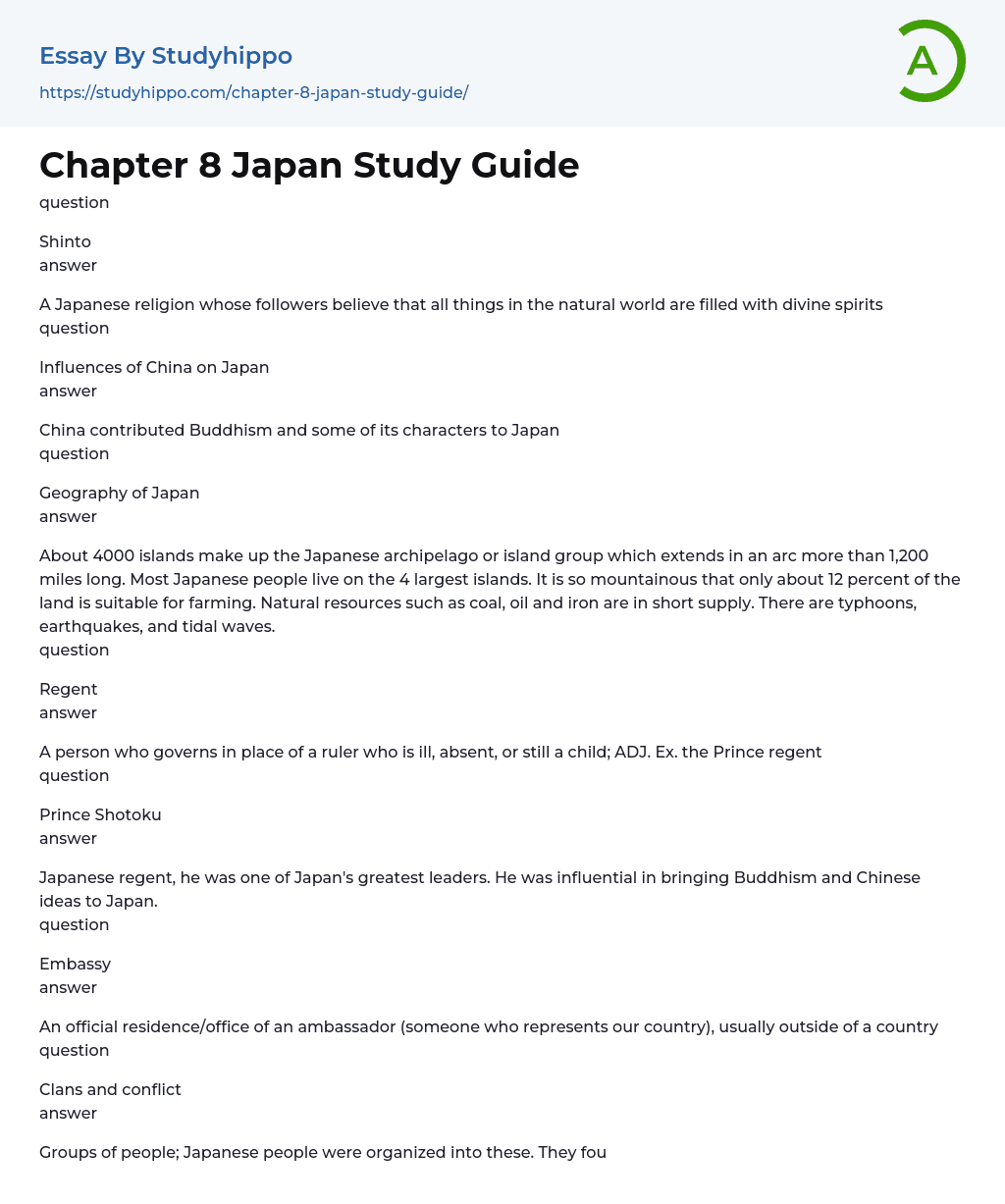There are typhoons, earthquakes, and tidal waves.
person who governs in place of a ruler who is ill, absent, or still a child; ADJ. Ex. the Prince regent
It spread to Japan and elsewhere. A highly trained scholar (painter) or religious monk could create an immense variety of marks and forms with the brush.
of moment, calm quiet places for meditation.
Made of sand and rocks. A LOT of sand and rocks
was an ancient kingdom that consisted of parts of the modern Chinese provinces of Guangdong, Guangxi, and Yunnan and northern Vietnam.
For centuries it was the main power on the southeast Asian mainland. Improved rice cultivation (that allowed four crops per year) made this empire more prosperous.
Samurai moral code was based on loyalty, chivalry, martial arts, and honor until the death.
emperor was at the top of the feudal pyramid, but was only a figurehead. The real rulers, the shogun and daimyo, were under him in the feudal pyramid. Under their tier were the samurai, the warriors. Then came the peasants and artisans, who provided goods that were actually needed in life. At the bottom were the merchants, who sold unnecessary and uncommon goods.
- John Locke essays
- 9/11 essays
- A Good Teacher essays
- A Healthy Diet essays
- A Modest Proposal essays
- A&P essays
- Academic Achievement essays
- Achievement essays
- Achieving goals essays
- Admission essays
- Advantages And Disadvantages Of Internet essays
- Alcoholic drinks essays
- Ammonia essays
- Analytical essays
- Ancient Olympic Games essays
- APA essays
- Arabian Peninsula essays
- Argument essays
- Argumentative essays
- Art essays
- Atlantic Ocean essays
- Auto-ethnography essays
- Autobiography essays
- Ballad essays
- Batman essays
- Binge Eating essays
- Black Power Movement essays
- Blogger essays
- Body Mass Index essays
- Book I Want a Wife essays
- Boycott essays
- Breastfeeding essays
- Bulimia Nervosa essays
- Business essays
- Business Process essays
- Canterbury essays
- Carbonate essays
- Catalina de Erauso essays
- Cause and Effect essays
- Cesar Chavez essays
- Character Analysis essays
- Chemical Compound essays
- Chemical Element essays
- Chemical Substance essays
- Cherokee essays
- Cherry essays
- Childhood Obesity essays
- Chlorine essays
- Classification essays
- Cognitive Science essays


Unfortunately copying the content is not possible
Tell us your email address and we’ll send this sample there.
By continuing, you agree to our Terms and Conditions.


